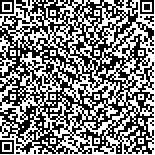张洁,付晓康,王勇勇,等.基于日常生活活动动作分析的任务导向性训练对脑卒中患者的康复疗效[J].中华物理医学与康复杂志,2022,44(7):595-598
扫码阅读全文

|
| 基于日常生活活动动作分析的任务导向性训练对脑卒中患者的康复疗效 |
|
| |
| DOI:10.3760/cma.j.issn.0254-1424.2022.07.004 |
| 中文关键词: 脑卒中 动作分析 任务导向性训练 日常生活能力 |
| 英文关键词: Stroke Action analysis Task-oriented training Daily life ability |
| 基金项目:国家重点研发计划(2018YFC2002300, 2018YFC2002301) |
|
| 摘要点击次数: 5440 |
| 全文下载次数: 6472 |
| 中文摘要: |
| 目的 基于日常生活活动(ADL)动作分析的任务导向性训练对脑卒中患者的康复疗效。 方法 将脑卒中后偏瘫患者62例随机分为实验组31例和对照组31例。2组患者均给予常规作业治疗,对照组在此基础上自行锻炼,实验组则增加基于ADL动作分析的任务导向性训练。基于ADL动作分析的任务导向性训练每日训练1次,每次训练45 min,每周训练5 d,连续训练6周。2组患者均于治疗前和治疗6周后(治疗后)采用上肢Fugl-Meyer运动功能评分法(FMA-UE)和Brunnstrom分期量表评定上肢功能,另采用改良的Barthel指数评分(MBI)评定其ADL能力。 结果 治疗后,2组患者的FMA-UE评分和MBI评分与组内治疗前比较,差异均有统计学意义(P<0.05);且实验组治疗后的FMA-UE评分和MBI评分分别为(45.19±5.62)分和(71.55±6.68)分,显著优于对照组治疗后,差异均有统计学意义(P<0.05)。治疗后,2组患者的上肢Brunnstrom分期较组内治疗前均显著改善,差异均有统计学意义(P<0.05),且实验组治疗后的Brunnstrom分期亦优于对照组治疗后,差异有统计学意义(P<0.05)。 结论 基于ADL动作分析的任务导向性训练可显著改善脑卒中后偏瘫患者的上肢运动功能和ADL能力,其疗效亦优于单纯的常规作业治疗。 |
| 英文摘要: |
| Objective To observe any effect of task-oriented training in the activities of daily living (ADL) for stroke patients. Methods Sixty-two hemiplegic stroke survivors were randomly divided into an experimental group and a control group, each of 31. In addition to routine occupational therapy, the control group exercised on their own, while the experimental group underwent 45-minute task-oriented training sessions based on ADL action analysis every day, 5 days a week for 6 weeks consecutively. Before and after the treatment the upper limb functioning of both groups was quantified using Fugl-Meyer upper limb motor function scoring (FMA-UE) and Brunnstrom staging (BSS). ADL skill was assessed using the modified Barthel index (MBI). Results After the treatment, the average FMA-UE and MBI scores of both groups were significantly better than before the treatment and better than the control group′s averages. The average BSS scores had also improved significantly, with that of the experimental group significantly better than the control group′s average. Conclusions Task-oriented training based on ADL motion analysis can significantly improve upper limb motor functioning and ADL ability after a stroke despite hemiplegia. Its efficacy is better than that of conventional occupational therapy alone. |
|
查看全文
查看/发表评论 下载PDF阅读器 |
| 关闭 |